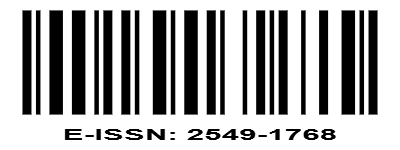Etnobotani Bambu di Kecamatan Darul Imarah Kabupaten Aceh Besar
DOI:
https://doi.org/10.22373/biotik.v8i1.5836Keywords:
Bamboo types, EthnobotanyAbstract
A study on Bamboo Ethnobotany has been conducted at Darul Imarah, Aceh Besar on June 10, 2010 to June 20, 2010. The aims of this study are to determine the types of bamboo and its utilization at Darul Imarah, Aceh Besar. The method used is observation. The data analyzed in this study were descriptive and displayed in figures and tables form. The parameters observed were the types of bamboo plants and its utilization by the people of Darul Imarah, Aceh Besar. The results showed that there were 6 types of bamboo at Darul Imarah, Aceh Besar, namely Bambusa arundinacea and Dendrocalamus asper, as their use for making household furniture and other building materials. The type of Bambusa vulgaris used from its bamboo shoots as a treatment for hepatitis. Types of Bambusa ventricosa and Dracaena surculosa are used as ornamental plants and home gardening plants. Type of Scizostachyum branchycladum which is used for making lemang. There are four genera namely Bambusa, Dendrocalamus, Scizotachyum, and Dracaena. The dominant type of bamboo that grows in the Darul Imarah, Aceh Besar is the Bambusa arundinacea type.
Downloads
References
Dransfield, S dan Widjaja, E. A. 1995. Dendrocalamus asper in Bamboos. Plant Resources of South-East Asia 7 Prosea, Bogor Indonesia.
Soedjono. dan Hartanto, H. 1994. Budidaya Bambu. Penerbit Dahara Prize, Semarang.
Sumarna, A. 1987. Bambu. Penerbit Angkasa, Indonesia.
Yudodibroto, H. 1980. Suatu Tinjauan Tentang Bambu dan Permasalahannya.Fakultas Kehutanan Univ. Gajah Mada, Yogyakarta.
Downloads
Published
Issue
Section
License
Authors who publish with BIOTIK: Jurnal Ilmiah Biologi Teknologi dan Kependidikan agree to the following terms:
- Authors retain copyright and grant the journal right of first publication with the work simultaneously licensed under a Creative Commons Attribution License that allows others to share the work with an acknowledgement of the work's authorship and initial publication in this journal.
- Authors are able to enter into separate, additional contractual arrangements for the non-exclusive distribution of the journal's published version of the work (e.g., post it to an institutional repository or publish it in a book), with an acknowledgement of its initial publication in this journal.
- Authors are permitted and encouraged to post their work online (e.g., in institutional repositories or on their website) prior to and during the submission process, as it can lead to productive exchanges, as well as earlier and greater citation of published work.











